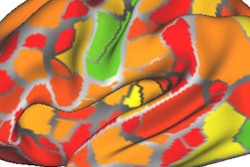
Functional MRI (fMRI) and functional connectivity MRI (fcMRI) have pinpointed regions of the brain that are triggered by the smell of food and influence reactions in obese children, according to a poster presentation scheduled for RSNA 2015 in Chicago.
The MRI protocols focus on areas of the brain associated with impulses and the development of obsessive-compulsive disorder, according to lead author Dr. Pilar Dies-Suarez, chief radiologist at the Hospital Infantil de México Federico Gómez. She said it is crucial to understand the brain mechanisms of odor stimulus to combat obesity in children.
The U.S. Centers for Disease Control and Prevention (CDC) estimates that there are more than 12 million obese children in the U.S., who also are at greater risk of developing high blood pressure, type 2 diabetes, and breathing and joint problems, among many other health issues. These same health concerns can follow children into adulthood.
Dies-Suarez and colleagues analyzed 30 children between the ages of 6 and 10 years. Half of the subjects had a normal body mass index (BMI) between 19 and 24, while the other half had a BMI greater than 30, which is considered obese. Each child was asked to smell chocolate, an onion, and a neutral odor of diluted acetone, while fMRI and fcMRI measured their brain activity.
Among the obese children, fMRI revealed activity in brain regions associated with impulses and obsessive-compulsive disorder in response to the food odors, while areas of the brain associated with impulse control had no such reaction. By comparison, in the normal-weight children, the areas of the brain associated with pleasure regulation, organization and planning, and emotional processing or memory function became more active.
When normal-weight children smelled the onion, fcMRI showed a connection between the gustatory cortex, which processes taste, and the area of the brain associated with reward anticipation. There was no such response among the obese children. Meanwhile, the smell of chocolate elicited significant brain connections in obese children, compared with the normal-weight children.
If there is a way to identify mechanisms that cause obesity, healthcare providers may be able to change the way these patients are treated, reducing obesity and saving lives, Dies-Suarez said.
The poster will be presented on Sunday, November 29, from 12:30 p.m. to 1:00 p.m. at Lakeside Learning Center (PD201-SD-SUA2, Pediatrics, Station 2).


.fFmgij6Hin.png?auto=compress%2Cformat&fit=crop&h=100&q=70&w=100)





.fFmgij6Hin.png?auto=compress%2Cformat&fit=crop&h=167&q=70&w=250)











